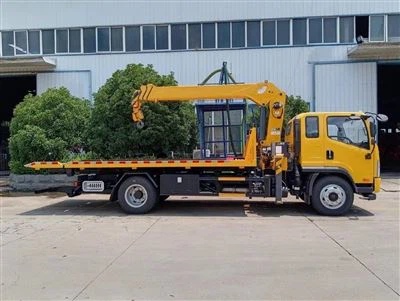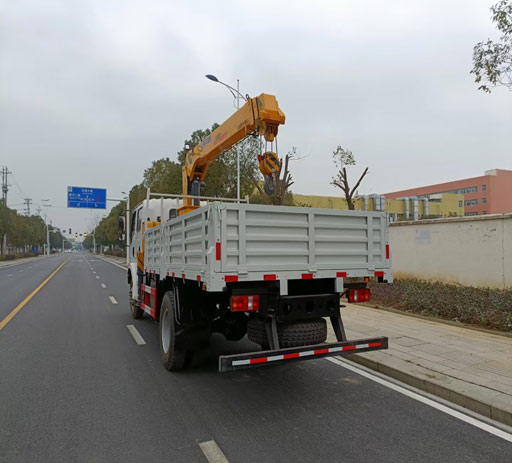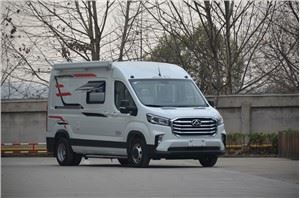Everything You Need to Know About Waste Trucks

Introduction
As urbanization increases and environmental concerns grow, waste management has become a vital aspect of city planning. Central to this process are waste trucks. These vehicles play a crucial role in collecting, transporting, and disposing of various types of waste. This article delves into the various types of waste trucks, their features, benefits, maintenance tips, and the future of waste management technology.
Types of Waste Trucks
1. Front-Load Waste Trucks
Front-load trucks are designed for commercial waste collection. Equipped with a front-loading mechanism, they can efficiently lift and empty large bins.
Features:
- High-capacity containers
- Operator-friendly controls
- Fast loading and unloading times
Best Use Cases:
Ideal for businesses, restaurants, and large facilities that produce a significant amount of waste.
2. Rear-Load Waste Trucks
Rear-load waste trucks are the most common type seen in residential areas. They have a manual or automated system for collecting trash from curbsides.
Features:
- Compaction capabilities to maximize storage
- Highly maneuverable in urban settings
- Can be fitted with automated arms
Best Use Cases:
Perfect for residential neighborhoods and smaller commercial properties.
3. Side-Load Waste Trucks
These trucks are designed with a side arm mechanism that allows them to pick up and empty bins placed on the side of the road.
Features:
- Best for urban environments with narrow streets
- Improved safety for the operator
- Reduces noise during collection
Best Use Cases:
Highly suitable for residential areas and city centers where space is limited.
How Waste Trucks Work
The operation of waste trucks involves several key components that ensure efficiency and effectiveness. Knowing how these systems work can help optimize their use and maintenance.
Loading Mechanism
Loading mechanisms vary by truck type. Here’s a brief overview:
- Front-load: Uses a hydraulic lift system.
- Rear-load: Manual or mechanical lift systems.
- Side-load: Hydraulic arms automate the process.

Compaction Systems
Most waste trucks are equipped with compaction systems that compress the waste. This increases the truck’s capacity and reduces the number of trips needed.
Disposal and Transfer
Once the truck reaches the disposal site, the waste is transferred to landfills or recycling centers. Understanding this part of the process is crucial for minimizing environmental impact.
Benefits of Modern Waste Trucks
Increased Efficiency
Modern waste trucks have been engineered for speed and efficiency, enabling quicker collection routes.
Environmental Impact
Many current models are designed to reduce carbon emissions and are capable of processing recyclable materials.
Improved Safety Features
New waste trucks are equipped with safety features such as cameras, backup alarms, and automated systems to reduce the risk of accidents.
Choosing the Right Waste Truck for Your Needs
Selecting the right waste truck involves considering several factors:
1. Type of Waste
Understand if you need a truck for lightweight residential waste, commercial waste, or hazardous materials.
2. Type of Service
Determine whether you will be offering curbside collection, centralized container collections, or servicing commercial buildings.
3. Local Regulations
Check local regulations regarding waste collection to ensure compliance with safety and environmental standards.
Maintenance Tips for Waste Trucks
Keeping waste trucks in top condition is crucial for operational efficiency.
Regular Inspections
Perform daily inspections of the vehicle’s components, including the mechanical systems and safety features.
Fluid Levels
Regularly check oil, coolant, and hydraulic fluid levels to prevent breakdowns during operation.
Tire Maintenance
Tires should be inspected for proper inflation and wear. Replace tires when necessary to maintain safety and efficiency.
Future of Waste Trucks
The future of waste trucks lies in technological advancements and sustainability.
Electric Waste Trucks
As electric vehicle technology advances, manufacturers are looking to create electric waste trucks to reduce emissions and save on fuel costs.
Smart Technology Integration
Smart waste trucks equipped with GPS and route optimization software can significantly improve operational efficiency.
Real-World Applications of Waste Trucks
Various cities and companies around the world are innovating in waste truck usage.
Case Study: San Francisco
San Francisco employs a fleet of side-load trucks to support its Zero Waste initiative. They collect recyclables and compostables separately, contributing to high diversion rates.
Case Study: New York City
NYC integrates smart waste management technologies into their fleet, utilizing GPS routing systems to maximize collection efficiency and reduce environmental impact.
Frequently Asked Questions (FAQs)
What is a waste truck?
A waste truck is a specialized vehicle designed for the collection and transportation of waste materials, including garbage, recyclables, and compost.
How often are waste trucks emptied?
Frequency varies by location and waste type; residential areas typically have scheduled pickups weekly, whereas commercial collections may be more frequent.
What types of waste trucks are available?
There are various types, including front-load, rear-load, and side-load trucks, each designed for specific purposes and types of waste.

Are there eco-friendly waste trucks?
Yes, many manufacturers now offer electric or hybrid waste trucks that produce fewer emissions and have lower environmental impact.
What maintenance do waste trucks require?
Regular inspections, fluid level checks, and tire maintenance are crucial to ensuring waste trucks operate efficiently and safely.

How can technology improve waste truck operations?
Technology such as GPS and route optimization software enhances efficiency, reduces costs, and lowers emissions in waste truck operations.
